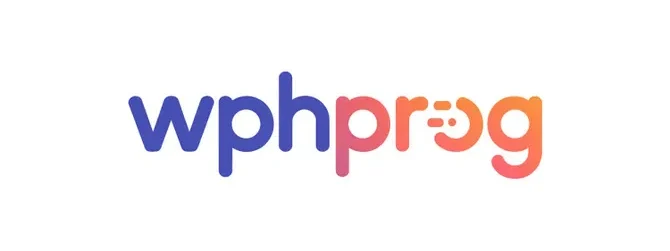Introduction
At WPHProg, we believe that building a great website goes beyond installing a theme or plugin. WordPress provides a powerful ecosystem for developers, but true mastery comes from understanding how to extend, customize, and optimize it. Whether you’re customizing existing themes, creating your own plugins, or writing custom PHP to implement unique features, this guide will provide the knowledge, best practices, and examples to help you build robust, scalable, and high-performance WordPress websites.
1. Understanding the WordPress Core
Before you write a single line of PHP, it’s crucial to understand how WordPress works behind the scenes. WordPress is built on PHP and MySQL and follows a modular architecture that separates themes, plugins, and the core functionality.
Key Concepts:
- Themes control the presentation of your site.
- Plugins extend functionality without touching core code.
- Hooks (actions and filters) let developers modify behavior safely.
Example:
To add a custom message after every post, you can use a filter:
function wphprog_add_custom_message($content) {
return $content . '<p>Thanks for reading!</p>';
}
add_filter('the_content', 'wphprog_add_custom_message');
Understanding hooks is essential — they allow you to extend WordPress without modifying core files, keeping your site safe during updates.
2. Theme Development & Customization
Choosing the right theme is the first step, but customization is where developers shine. You can start with a starter theme like Underscores or Genesis and build your design on top.
Best Practices:
- Use child themes to preserve customizations.
- Follow mobile-first responsive design principles.
- Keep your PHP clean, modular, and commented for maintainability.
Example: Adding a Custom Widget Area
function wphprog_register_sidebar() {
register_sidebar(array(
'name' => 'Custom Sidebar',
'id' => 'custom_sidebar',
'before_widget' => '<div class="widget">',
'after_widget' => '</div>',
'before_title' => '<h3 class="widget-title">',
'after_title' => '</h3>',
));
}
add_action('widgets_init', 'wphprog_register_sidebar');
This snippet adds a new sidebar for your theme where users can drag widgets.
3. Plugin Development
Plugins are the backbone of WordPress customization. Developing your own plugins allows you to add functionality tailored to your site.
Plugin Basics:
- Every plugin has a main PHP file with metadata.
- Use hooks to integrate features without altering the core.
- Ensure your plugin is secure by sanitizing inputs and escaping outputs.
Example: Simple “Hello World” Plugin
/*
Plugin Name: WPHProg Hello
Description: Displays a Hello World message.
Version: 1.0
Author: WPHProg
*/
function wphprog_hello_message() {
echo '<p>Hello, WPHProg visitor!</p>';
}
add_action('wp_footer', 'wphprog_hello_message');
This plugin outputs a message in the footer. From here, you can expand into more complex features like custom post types, shortcodes, or integrations with third-party APIs.
4. PHP in WordPress
PHP is the engine of WordPress. Understanding PHP basics and WordPress-specific functions allows you to do much more than simple tweaks.
Key Techniques:
- Loops: Control how posts are displayed.
- Template tags: Retrieve data like titles, excerpts, and metadata.
- REST API: Enables headless WordPress or integration with external apps.
Example: Custom Loop for Featured Posts
$args = array(
'posts_per_page' => 5,
'meta_key' => 'featured',
'meta_value' => '1'
);
$featured = new WP_Query($args);
if($featured->have_posts()) {
while($featured->have_posts()) {
$featured->the_post();
echo '<h2>' . get_the_title() . '</h2>';
}
wp_reset_postdata();
}
This snippet queries posts with a custom meta key featured and displays them.
5. Performance Optimization
Even a beautifully coded site can fail if it’s slow. Optimizing WordPress involves both server-side and front-end techniques.
Tips:
- Reduce HTTP requests by minimizing scripts and styles.
- Compress images and use lazy loading.
- Implement caching via plugins like WP Rocket or the transient API.
- Profile and debug slow code using Query Monitor.
Example: Using Transients for Expensive Queries
$recent_posts = get_transient('wphprog_recent_posts');
if(!$recent_posts) {
$recent_posts = wp_get_recent_posts(array('numberposts' => 5));
set_transient('wphprog_recent_posts', $recent_posts, 12 * HOUR_IN_SECONDS);
}
This caches the result of a query for 12 hours, reducing database load.
6. Security Best Practices
Security is often overlooked but critical in WordPress development.
Recommendations:
- Use nonces to validate form submissions.
- Sanitize all input (
sanitize_text_field,esc_url) and escape outputs. - Set correct user permissions for admin and contributors.
- Keep themes, plugins, and WordPress core up to date.
Example: Using a Nonce for Form Submission
if( isset($_POST['wphprog_nonce']) && wp_verify_nonce($_POST['wphprog_nonce'], 'wphprog_save_data') ) {
// Process form safely
}
7. Tools and Workflows
Professional WordPress development benefits from structured workflows:
- Local Development: Use Local by Flywheel or DevKinsta.
- Version Control: Git for tracking changes and collaborating.
- Staging Sites: Test changes before pushing to production.
- Debugging: Use WP_DEBUG, Query Monitor, and error logs.
Conclusion
Mastering WordPress development is about more than building visually appealing websites. It’s a combination of clean code, robust plugin architecture, custom PHP solutions, performance optimization, and security awareness. At WPHProg, we provide tutorials, practical examples, and guidance to help you become a confident WordPress developer, whether you are customizing themes, building plugins, or exploring advanced development techniques.
By following these practices, you can create websites that are scalable, secure, fast, and tailored to any project need, giving you the freedom to push WordPress beyond its traditional limits.
